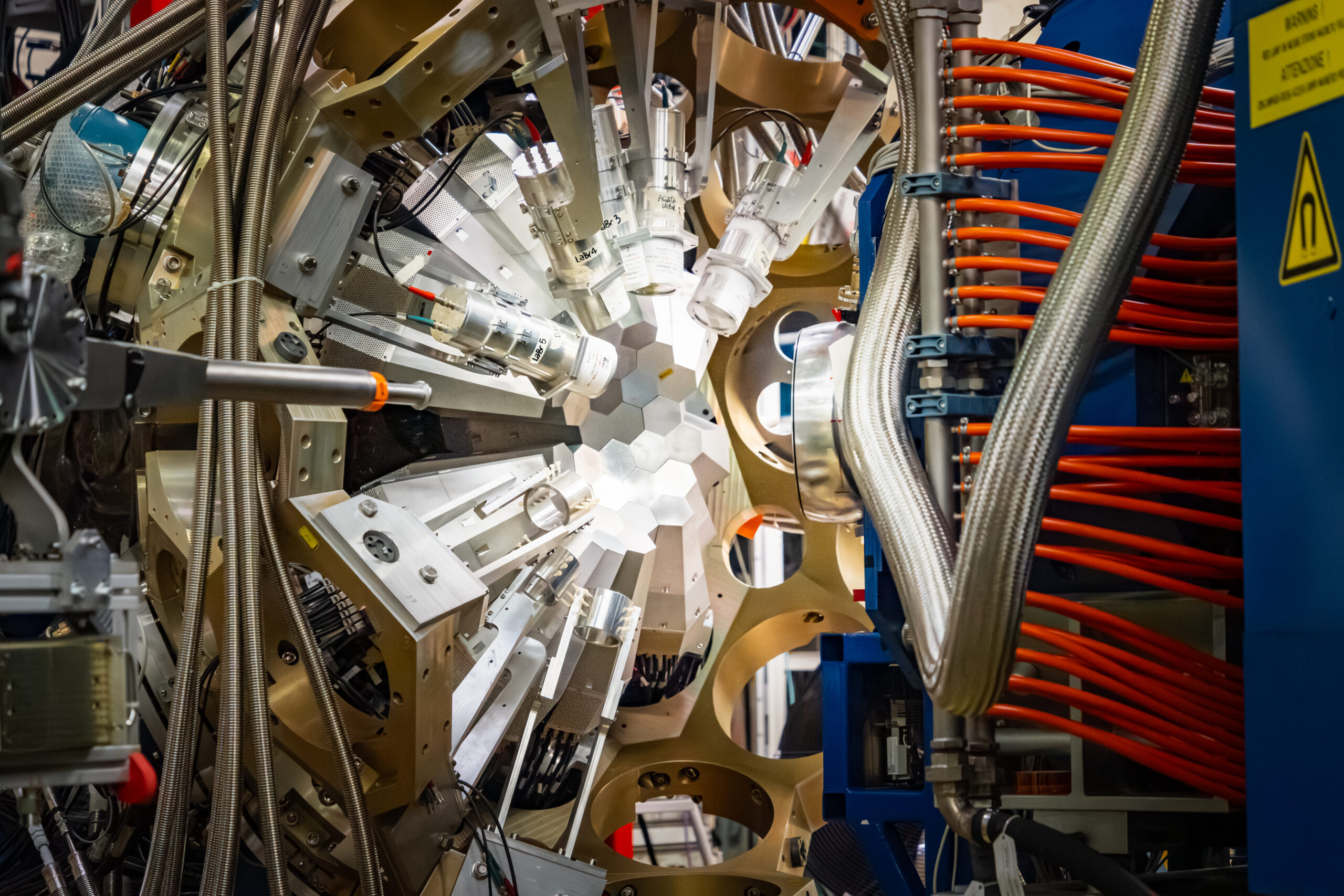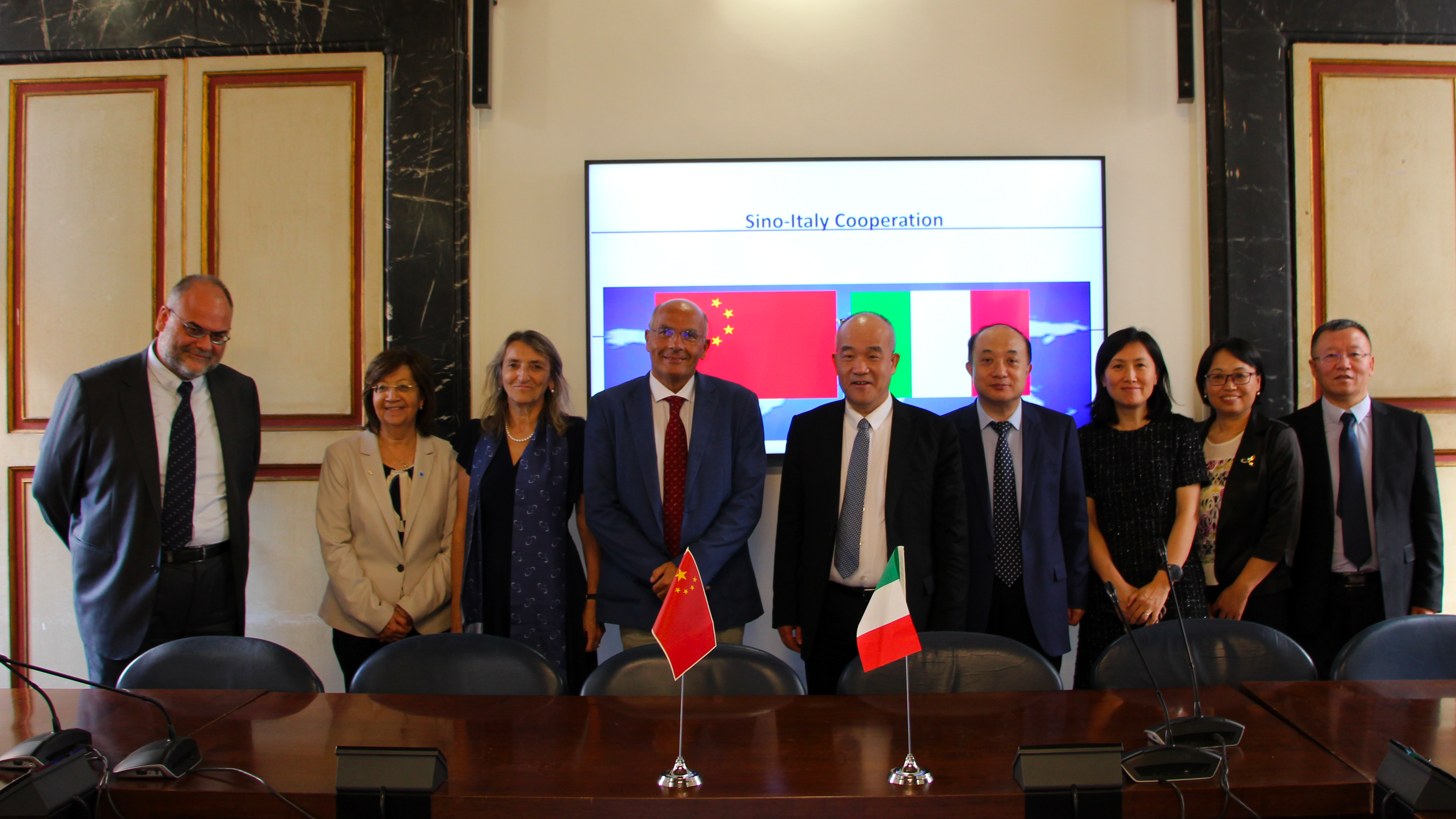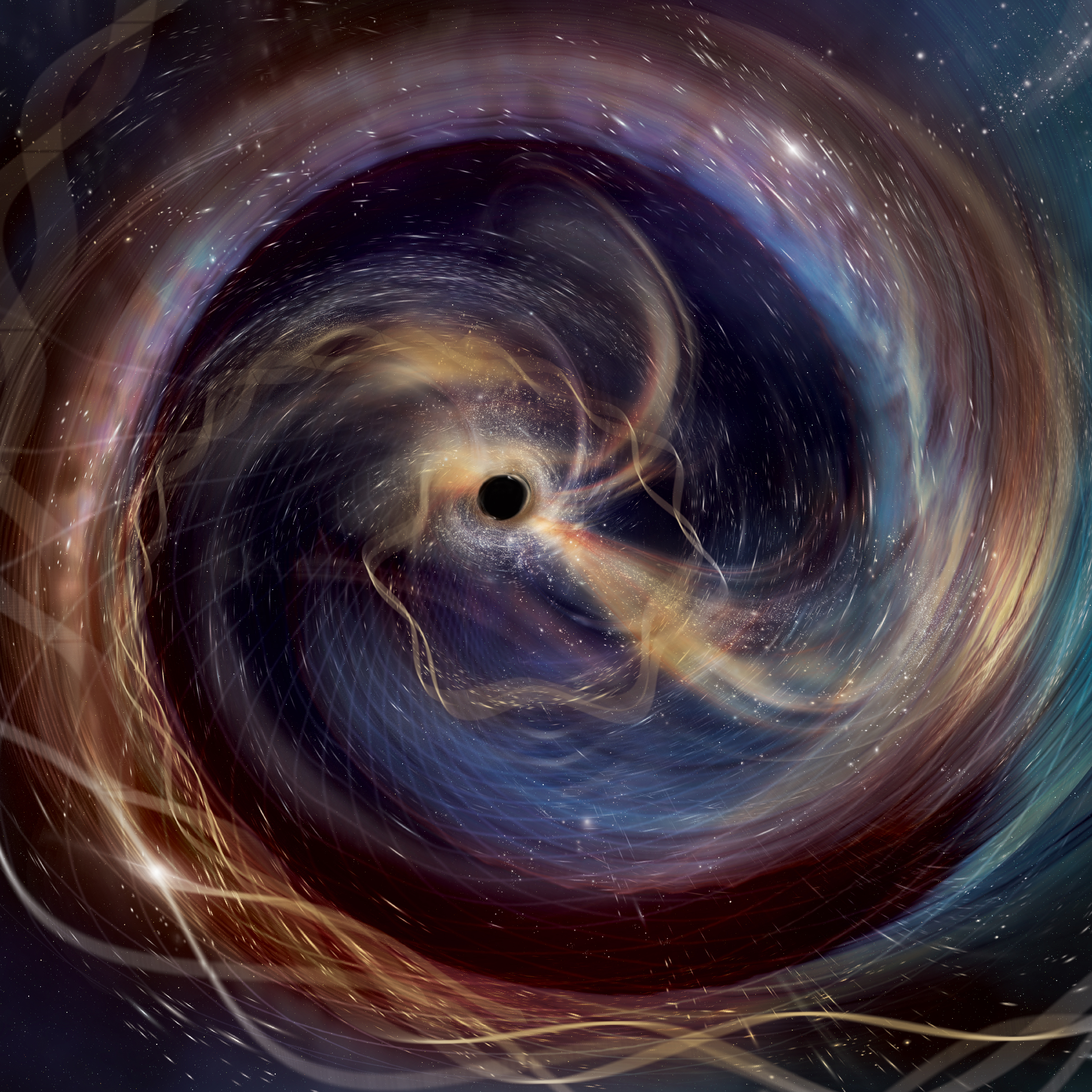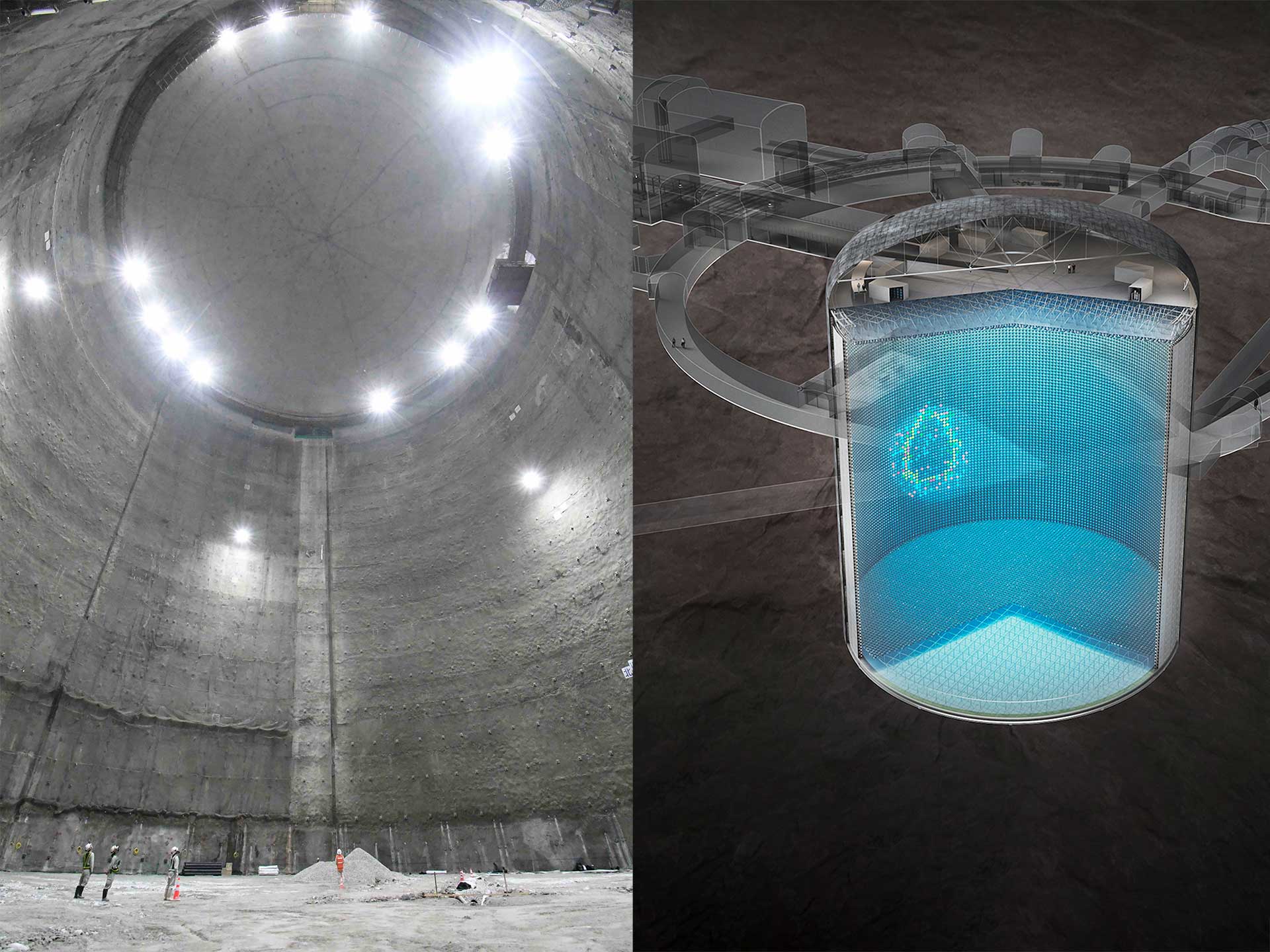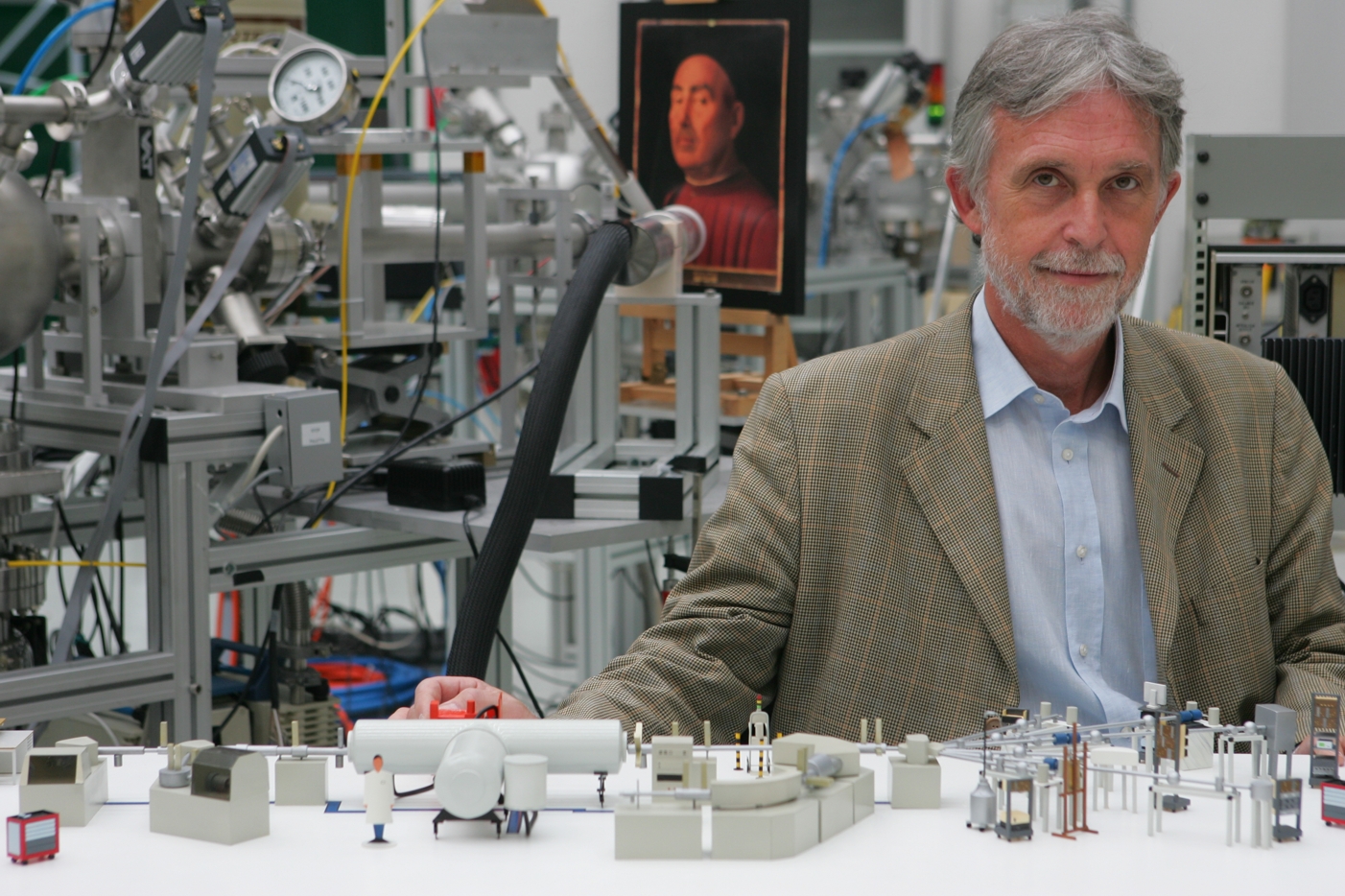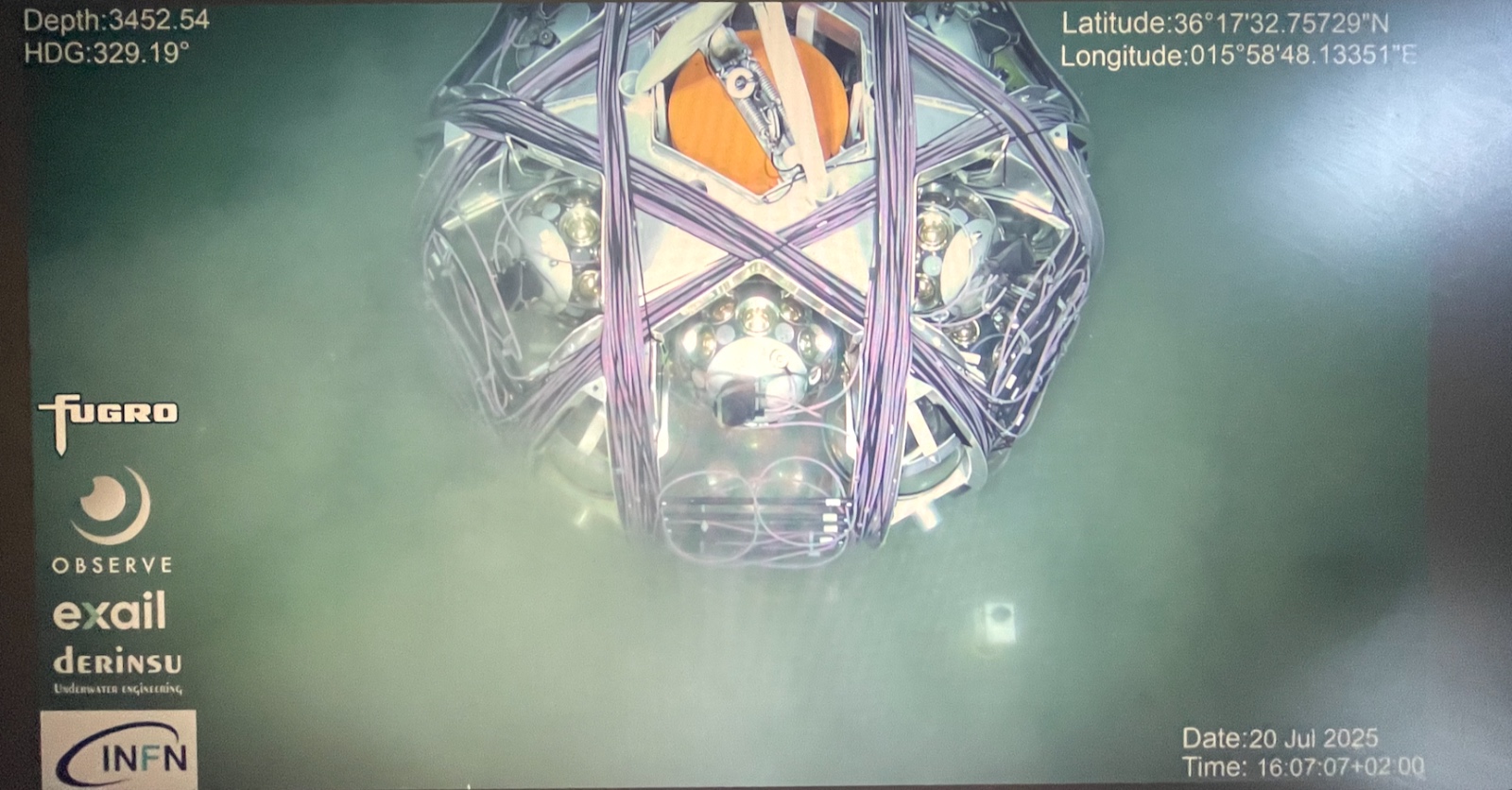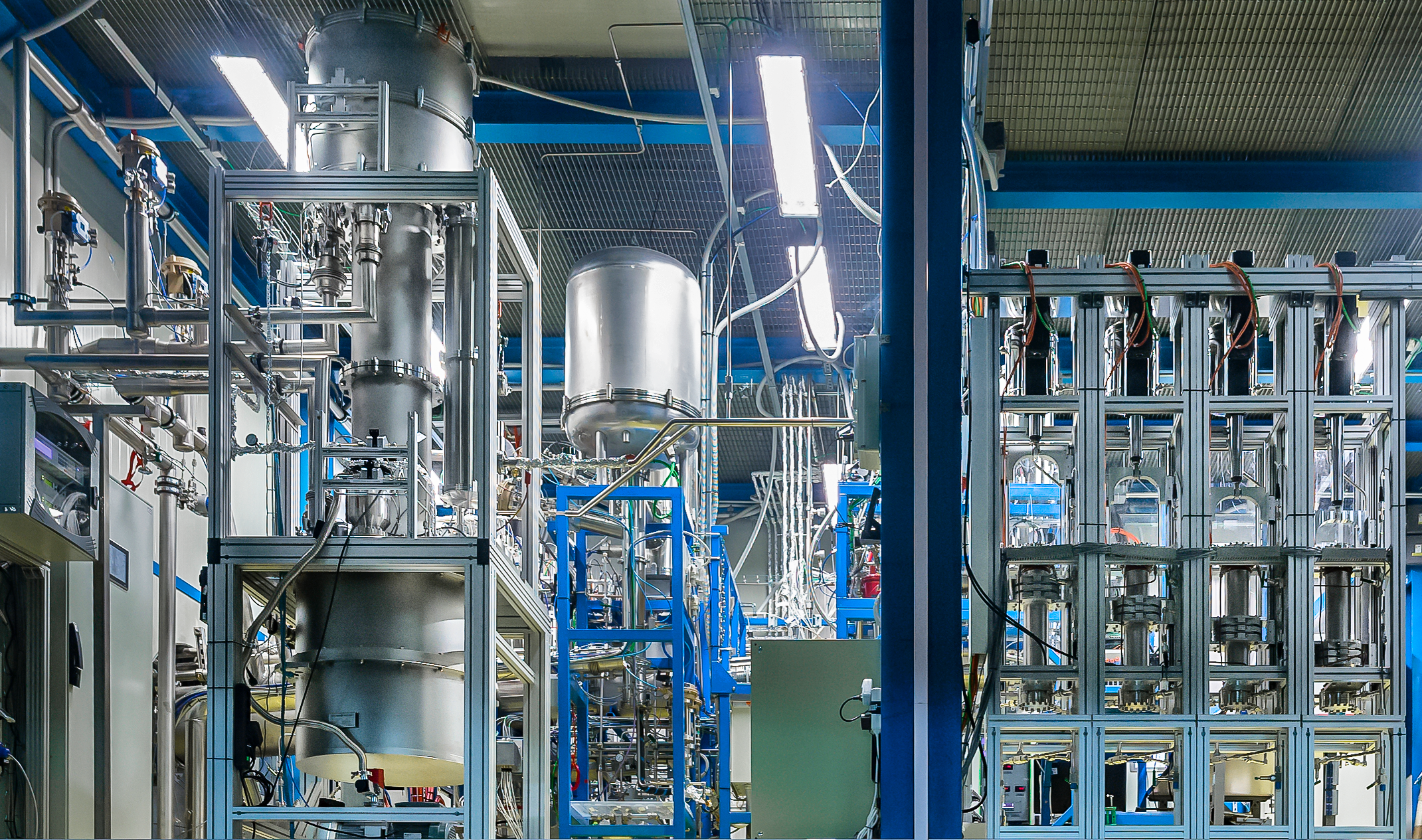In the global search for dark matter, the XENONnT experiment at the INFN Gran Sasso National Laboratories (LNGS) stands out as one of the most sensitive detectors in the world, and an innovative technology recently presented in Physical Review X, will now allow the experiment to push its limits even further in the hunt for rare signals. The international collaboration, comprising over 190 scientists from 30 institutions worldwide, has achieved in fact a significant reduction in radioactive background noise, marking an unprecedented result in rare-event physics experiments.
At the heart of this innovation lies a cryogenic distillation system that purifies the liquid xenon inside the detector. The new system has reduced radon-induced radioactivity to an extraordinarily low level: a billion times lower than the natural radioactivity of the human body, and four times lower than the previous record level in XENONnT.
This achievement is crucial for detecting the extremely faint signals in xenon-based detectors arising from the rare interactions of dark matter particles.
The XENONnT detector aims to measure the interactions of hypothetical dark matter particles with xenon atoms. Shielded deep underground from cosmic rays and maintained at -95 °C to keep xenon in its liquid state, the detector requires an environment virtually free from contamination. However, even trace amounts of radon can generate false signals, masking the rare events that scientists are searching for.
The new distillation column continuously purifies the xenon, lowering the radon concentration to just 430 radon atoms per tonne of liquid xenon, making its background contribution comparable to that of solar neutrinos. This sets a new benchmark for purity in xenon-based detectors and dramatically increases their sensitivity to rare particle interactions.
“The XENONnT experiment is a testament to the power of international collaboration and continuous innovation. This breakthrough in purification technology is not merely an incremental step; it is a leap forward that dramatically enhances our ability to listen to the faint whispers of dark matter in the universe”, said Christian Weinheimer, professor at the University of Münster and leader of the group behind the development of this technology.
“This result is a fundamental step not only for the ongoing measurement campaign, but also and above all for future searches for dark matter and solar neutrinos using liquid xenon detectors, as it sets a new standard of purity that will pave the way for even greater sensitivity in upcoming experiments”, added Marco Selvi, researcher at the INFN Bologna division and coordinator of the Italian groups within the XENONnT collaboration.
